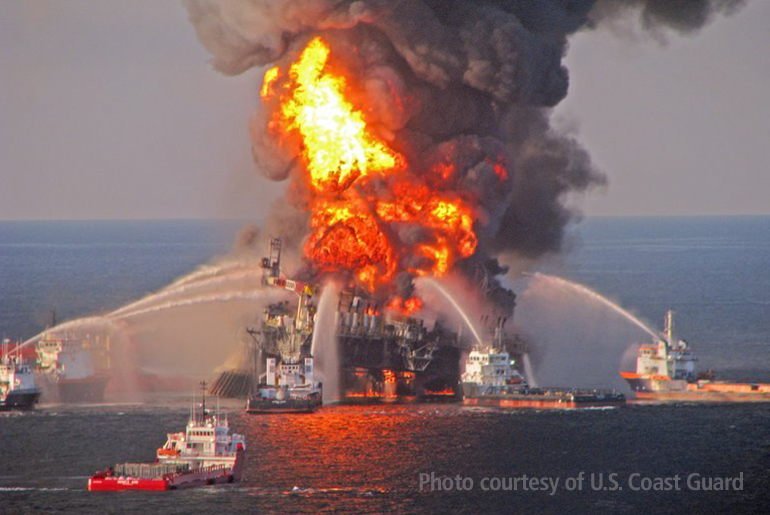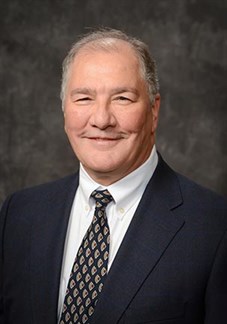
Riser gas behavior was a major factor in the Deepwater Horizon disaster in April 2010, where an uncontrolled blowout on the Macondo well caused explosions that killed 11 people, sank the offshore rig and led to a hydrocarbon release in the Gulf of Mexico, damaging the environment.
To address the risks of riser gas in offshore drilling, Dr. Wesley Williams, a professional in residence at the Craft & Hawkins Department of Petroleum Engineering at Louisiana State University (LSU), and Dr. Jerome Schubert, an associate professor in the Harold Vance Department of Petroleum Engineering at Texas A&M University, are heading a joint project focusing on gaps in the understanding of riser gas behavior. Their project is funded with a $4.9 million award from the Gulf Research Program of the National Academies of Sciences, Engineering and Medicine.
With the use of a modified land well and several labs at both universities, Williams and Schubert will gather data to understand and model some of the harsh conditions of offshore drilling. Their models and predictions mean better sensors, advisory systems and equipment can be manufactured to warn about and prevent uncontrolled hydrocarbon releases or catastrophic blowout disasters in the future.
 The project will begin by using the LSU Petroleum Engineering Research and Technology Transfer Laboratory and a modified 5,800-foot deep test well on the LSU campus, called the Gulf Research Well, to perform simulations of kicks and gas-bubble migrations in offshore drilling muds.
The project will begin by using the LSU Petroleum Engineering Research and Technology Transfer Laboratory and a modified 5,800-foot deep test well on the LSU campus, called the Gulf Research Well, to perform simulations of kicks and gas-bubble migrations in offshore drilling muds.
Drilling muds are the heavy synthetic or oil-based muds circulated down the drill string behind the bit and back up the borehole to counter the pressures in a reservoir, keeping liquids and gasses deep in the earth from forcing their way up the well while drilling is in progress. A kick is the term for pressurized gas from a reservoir entering the borehole and mixing with the drilling mud. If the kick is not stopped, gas will migrate up and into the riser, where it is called riser gas. A riser is the conduit between a drilling rig and a well on the seafloor below.
Weatherford Deepwater Well Control will provide offshore muds needed for the Gulf Research Well phase of the project, with representative Robert Ziegler consulting on fluids and deep-water conditions. The simulations will generate mud and gas datasets in controlled temperature and pressure environments.
The mud and gas datasets will be verified in lab-scale test environments at Texas A&M using the Tower Lab, under the direction of Dr. Rashid Hasan, and the Dual Gradient Drilling Lab, under the direction of Schubert. Both labs will use scaled simulations to replicate and confirm the data and understand the physics behind riser gas behavior. Once this is done, researchers will create computer models in the new High Pressure and High Temperature Fluids Laboratory at LSU to better predict the behavior of riser gas.
The properties of mud and gas mixtures will also be measured under extreme conditions at Schubert's High Temperature/High Pressure Laboratory at Texas A&M. Schubert will use this new data to develop a high temperature/high pressure kick-and-well-control model for gas kicks in oil-based and synthetic drilling fluids, which will be superior to the water-based mud assumptions or black-oil models currently used.
 Although newer risers are designed with gas handling equipment installed in the top of the riser, operations can only improve if more is known about the behavior of gas entering the synthetic drilling muds and what happens when gas reaches the riser. That is why Williams and Schubert's research is so critical.
Although newer risers are designed with gas handling equipment installed in the top of the riser, operations can only improve if more is known about the behavior of gas entering the synthetic drilling muds and what happens when gas reaches the riser. That is why Williams and Schubert's research is so critical.
"Standard operation is not to let any gas get in the riser, but when you're in ultradeep water, things are different," said Schubert, who has specialized in deepwater well-control research for many years. "If we understand the process, we can design a system to prevent it. We can develop procedures where gas in the riser is not a problem. I want incidents like the Macondo (well disaster) to never happen again."